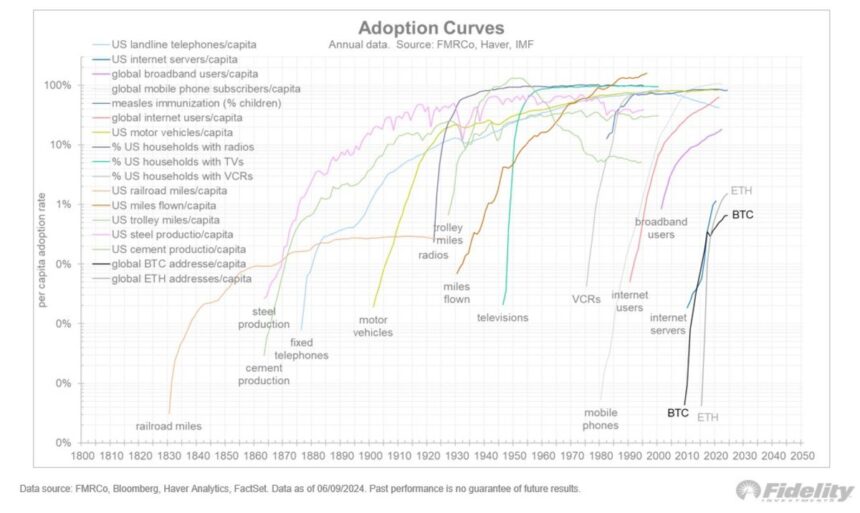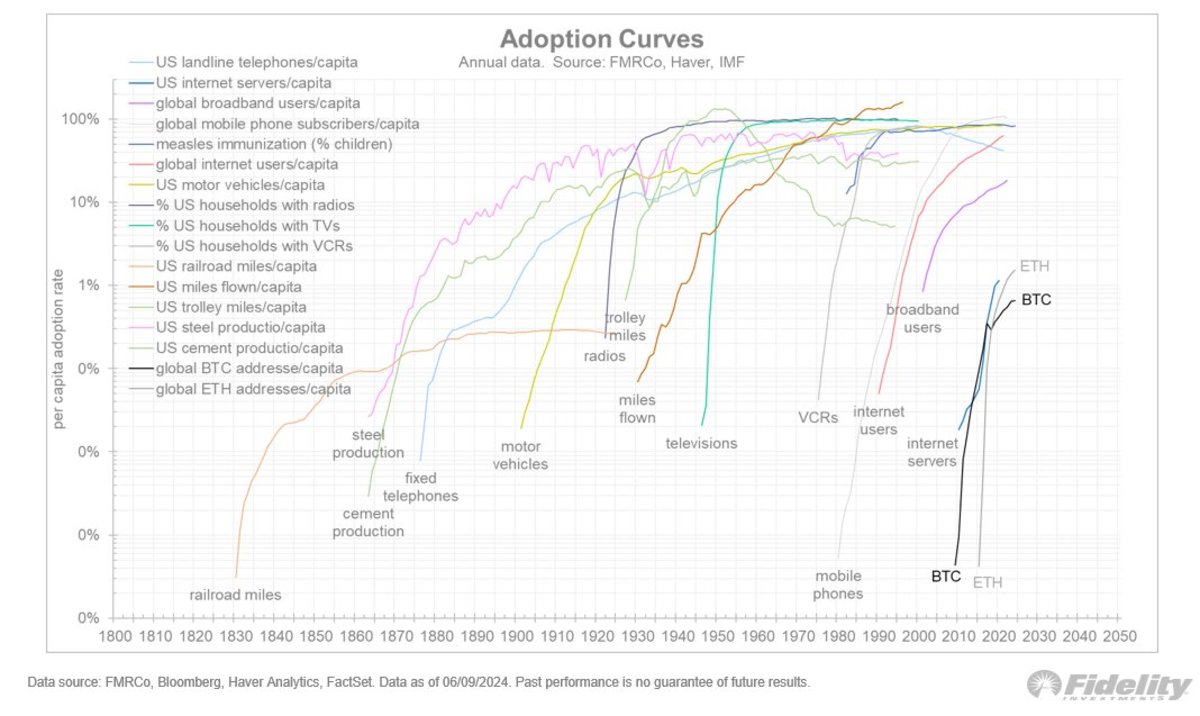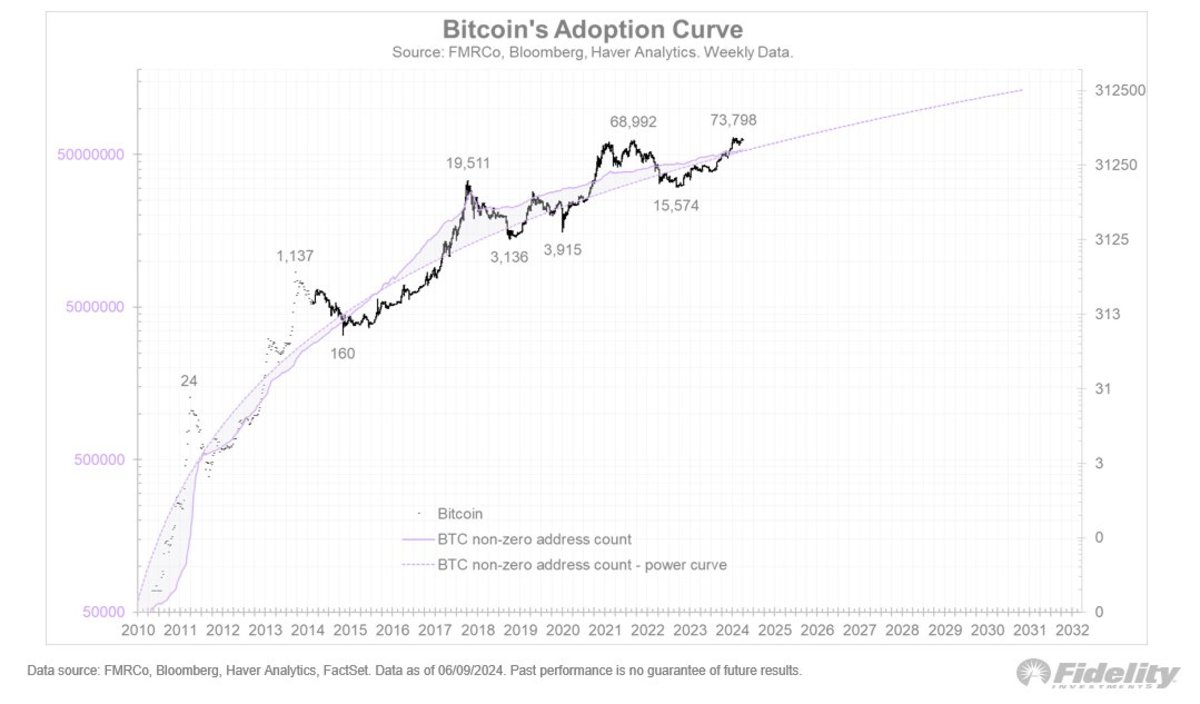Julian Timmer, director of global macro at Fidelity, recently made some notable remarks about Bitcoin, describing it as “exponentially growing gold” and an emerging player in the “store of value” team. Timmer’s comments were shared through a series of posts, elaborating on Bitcoin’s evolving role in the financial ecosystem.
In my view, Bitcoin is exponentially growing gold and a promising player in the store of value team. My research shows that Bitcoin’s price is primarily driven by network growth, which in turn is driven by Bitcoin’s unique scarcity, and by monetary and fiscal policies…
— Julian Timmer (@TimmerFidelity) June 13, 2024
Timmer emphasized that Bitcoin occupies a unique position in the market and compared its growth trajectory to the exponential adoption curves seen in technologies such as the Internet and mobile phones. He emphasized that Bitcoin’s scarcity and growing adoption as a digital asset contribute to its potential as a long-term store of value, similar to gold.
In his post, Timmer suggested that Bitcoin adoption rate and network growth are key factors in valuation, noting that while Bitcoin is still in its infancy compared to traditional assets, its adoption is accelerating exponentially, supporting the thesis that Bitcoin could become a significant store of value in the future.
“The graph below shows that the Bitcoin network is growing along a simple power curve. The number of non-zero addresses is converging onto this power curve, and Bitcoin’s price swings around it like a pendulum,” he said. “This is Bitcoin’s unique boom and bust cycle.”
Timmer’s support is in line with a broader trend of institutional investors recognizing Bitcoin’s potential. His views confirm Bitcoin’s growing legitimacy within the financial industry and suggest it may play an important role in future investment strategies.
“Bitcoin’s network growth has slowed in recent months, while the price continues to rise,” he concluded. “In my view, this disconnect between price and adoption may explain why Bitcoin has slowed a bit on its way to new all-time highs. The pendulum can only swing so far, and the network may need to accelerate again to continue to new highs.”






